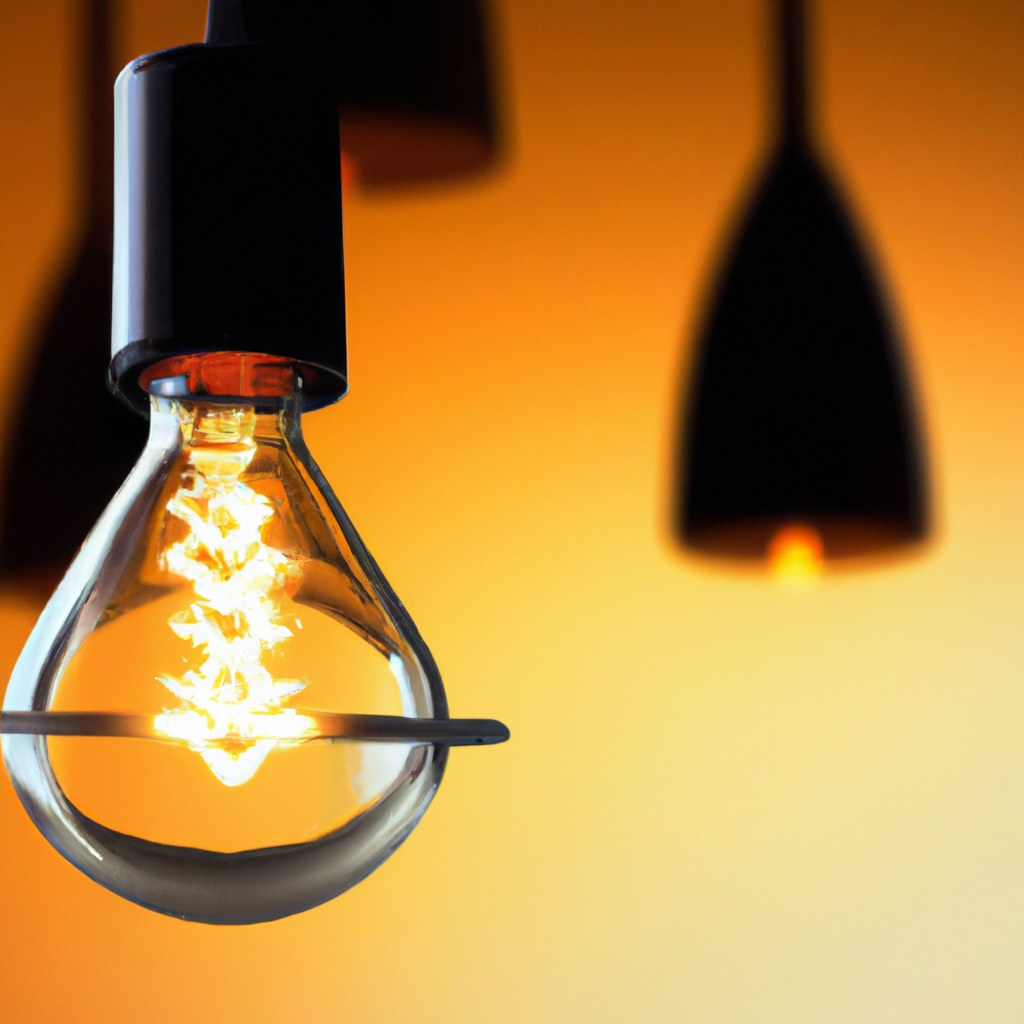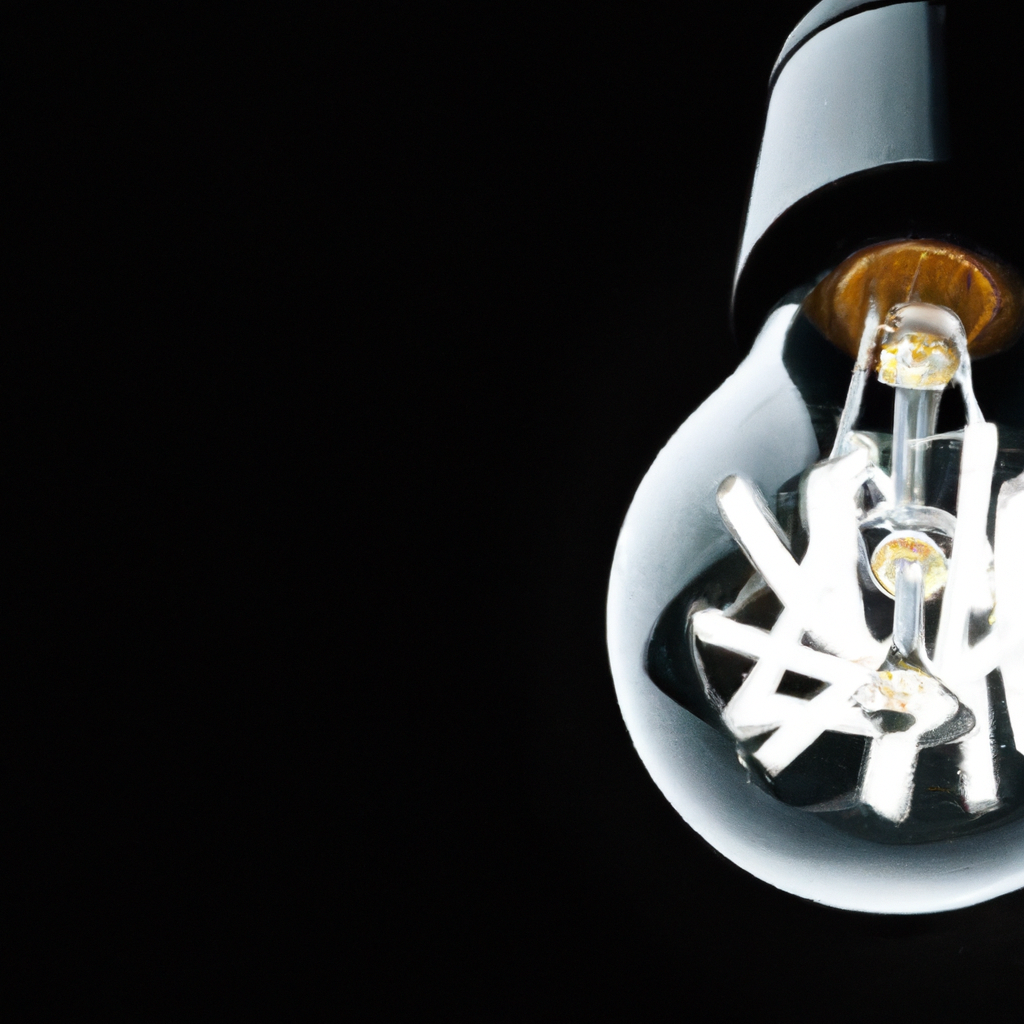Imagine living in a home that knows your energy needs even before you do, where lights automatically turn off when you leave a room, and appliances adjust their usage based on your energy consumption patterns. This is the power of smart homes in energy conservation and efficiency. By incorporating cutting-edge technologies and innovative automation systems, smart homes have the potential to drastically reduce energy waste and empower homeowners to make sustainable choices. In this article, we will explore the role of smart homes in promoting energy conservation and efficiency, highlighting the numerous benefits they offer not only to individuals but also to the environment as a whole.
Benefits of Smart Homes for Energy Conservation and Efficiency
Smart homes play a significant role in promoting energy conservation and efficiency. By utilizing advanced technologies and automation, smart homes have the potential to reduce energy consumption, optimize energy usage, and provide comprehensive monitoring and control of energy consumption. This article explores the various ways in which smart homes can contribute to energy conservation and efficiency, along with the potential benefits and challenges associated with their implementation.
Reducing energy consumption
One of the primary benefits of smart homes is their ability to reduce energy consumption. Smart homes achieve this by employing energy-efficient appliances and devices, along with implementing home automation systems and integrating renewable energy sources. These measures allow homeowners to minimize unnecessary energy usage and make informed decisions to conserve energy.
Optimizing energy usage
In addition to reducing energy consumption, smart homes also optimize energy usage. With the help of smart thermostats, homeowners can efficiently regulate heating and cooling systems based on occupancy and pre-set schedules. By automatically adjusting temperature settings and intelligently detecting when rooms are unoccupied, smart thermostats can significantly reduce energy waste and create a comfortable living environment.
Monitoring and controlling energy consumption
Smart homes provide homeowners with the ability to monitor and control their energy consumption comprehensively. Through real-time energy monitoring, individuals can view their current energy usage and gain insights into which devices or appliances consume the most power. With this information, users can make smarter choices to conserve energy, such as turning off unnecessary lights or unplugging devices in standby mode. Furthermore, smart homes enable remote control of appliances, allowing homeowners to turn off devices remotely and prevent energy wastage.
Energy Efficient Appliances and Devices
To support energy conservation and efficiency, smart homes heavily rely on energy-efficient appliances and devices. These advanced technologies ensure that energy is utilized optimally without compromising functionality.
Smart thermostats
Smart thermostats are key components of energy-efficient smart homes. These devices utilize advanced algorithms and machine learning to regulate heating and cooling systems intelligently. By learning the heating and cooling patterns of a household and considering external factors such as weather forecasts, smart thermostats automatically adjust temperature settings to minimize energy consumption while maintaining a comfortable indoor environment. Additionally, remote access capabilities allow homeowners to control thermostat settings even when they are away from home, further optimizing energy usage.
Smart lighting
Smart lighting systems offer significant energy-saving benefits. These systems use LED bulbs – known for their energy efficiency – along with intelligent controls that enable users to adjust lighting intensity, color, and timing. With smart lighting, homeowners can create personalized schedules to turn lights on and off automatically based on occupancy or specific periods of the day. Motion sensors can also be integrated, allowing lights to illuminate only when someone is present in a room. By eliminating the need for manual control and ensuring lights are only on when required, smart lighting systems contribute to significant energy savings.
Energy-efficient appliances
In a smart home, energy-efficient appliances play a vital role in minimizing energy consumption. From refrigerators and washing machines to televisions and dishwashers, these appliances are designed to operate with higher energy efficiency ratings. Energy-efficient appliances often incorporate features such as smart power management, standby power reduction, and advanced insulation techniques to maximize energy conservation. By integrating these appliances into a smart home ecosystem, homeowners can effectively reduce their overall energy usage and contribute to a greener environment.

Home Automation Systems and Energy Conservation
Home automation systems are instrumental in promoting energy conservation within smart homes. By automating various aspects of home management, these systems ensure optimal energy usage while providing convenience and comfort to homeowners.
Automated heating and cooling
With the integration of smart thermostats and sensors, home automation systems enable automated control of heating and cooling systems. By leveraging occupancy sensors and detecting residents’ patterns, homes can dynamically adjust temperature settings based on the current occupancy status. For example, if no one is present in a room, the system can automatically lower the temperature to conserve energy. Additionally, pre-set schedules allow users to program temperature adjustments for different times of the day, ensuring efficient energy usage based on anticipated needs.
Automated lighting control
Smart homes equipped with automated lighting control systems offer significant energy-saving benefits. These systems utilize sensors and timers to automatically turn lights on or off based on occupancy and pre-defined schedules. For instance, when a room is unoccupied, the system will automatically switch off the lights, preventing unnecessary energy consumption. Additionally, some smart lighting solutions allow users to control lights remotely through mobile applications, ensuring optimal energy usage by enabling manual control even when away from home.
Automated appliance management
With the help of home automation systems, smart homes can automate the management of various household appliances. By integrating appliances such as washing machines, dishwashers, and dryers with smart hubs or control panels, homeowners can schedule these devices to operate during off-peak hours when electricity costs are lower. This not only reduces energy expenses but also contributes to the overall load balancing on the electric grid. Adding intelligence to appliance management enables homeowners to optimize energy consumption, saving both money and resources.
Integration of Renewable Energy Sources
Smart homes have the capability to integrate renewable energy sources such as solar panels, wind turbines, and hydroelectric generators. By harnessing these green energy sources, homeowners can reduce reliance on traditional energy grids and contribute to a sustainable energy future.
Solar panels
Solar panels are perhaps the most common form of renewable energy generation in smart homes. Through the conversion of sunlight into electricity, solar panels can provide a significant portion or even the entirety of a home’s energy needs. The excess energy generated by solar panels can be stored in batteries or fed back into the grid, resulting in potential cost savings and a reduced carbon footprint. Smart homes equipped with solar panels can monitor energy production, consumption, and storage levels, allowing homeowners to make informed decisions regarding their energy usage.
Wind turbines
For homeowners residing in suitable areas, wind turbines offer another viable option for harnessing renewable energy. Wind turbines can generate electricity from the wind’s kinetic energy, supplementing or even replacing traditional energy sources. Smart homes integrated with wind turbines can automatically adjust the orientation and speed of the turbines based on wind conditions to maximize energy production. Real-time monitoring capabilities ensure that energy production is optimized, and excess energy can be directed towards battery storage or distributed back to the grid.
Hydroelectric generators
In regions with access to flowing water, hydroelectric generators can be utilized to generate renewable energy for smart homes. By harnessing the power of water flow through turbines, hydroelectric generators can provide a constant source of clean energy. Integrated with smart home systems, these generators can be monitored and controlled to ensure optimal energy production based on water flow rates. Homeowners can track energy production and usage, making informed decisions to manage their energy resources effectively.

Smart Grid Technology
The implementation of smart homes is closely tied to the evolution of smart grid technology. Smart grids enable the seamless integration of renewable energy sources, efficient energy distribution, and dynamic pricing mechanisms, contributing to energy conservation and efficiency.
Demand response programs
Smart grid technology facilitates demand response programs, which incentivize homeowners to reduce their energy usage during peak demand periods. By voluntarily participating in these programs, individuals can receive financial incentives or other benefits for temporarily reducing their energy consumption. Smart homes can automatically respond to signals from the grid, adjusting energy usage during peak times or when electricity costs are higher. This dynamic management helps alleviate strain on the grid and promotes efficient energy consumption.
Dynamic pricing
Smart grids enable dynamic pricing structures that vary based on the time of day, season, or grid conditions. By incorporating time-of-use tariffs and real-time pricing mechanisms, smart grids encourage homeowners to shift their energy usage to off-peak hours when electricity costs are lower. Smart homes equipped with energy monitoring capabilities can take advantage of these pricing schemes, automatically adjusting energy usage to align with the most cost-effective periods. Consequently, homeowners can optimize their energy consumption while taking advantage of potential cost savings.
Peak-time rebates
Smart grid technology also facilitates peak-time rebates, which reward homeowners for reducing their energy consumption during periods of high demand. By participating in these rebate programs, homeowners can receive financial incentives or credits on their utility bills. Smart homes can detect peak demand periods through signals from the grid and automatically adjust energy usage. By temporarily reducing energy consumption during these peak times, homeowners not only contribute to overall energy conservation but also benefit financially from the grid operator.
Data Analytics and Predictive Maintenance
Data analytics play a crucial role in enabling smart homes to optimize energy consumption and improve efficiency. By analyzing energy consumption patterns and adopting predictive maintenance practices, homeowners can make data-driven decisions to maximize energy savings.
Energy consumption data analysis
Smart homes collect extensive data on energy usage, allowing homeowners to gain insights into their consumption patterns. By leveraging data analytics tools and algorithms, individuals can identify patterns, trends, and anomalies in their energy consumption. Analysis of this information helps homeowners understand which appliances consume the most energy and can identify potential areas for improvement. Armed with this knowledge, individuals can make informed decisions to reduce energy waste and adopt more energy-efficient behaviors, ultimately saving money and conserving valuable resources.
Predictive maintenance to improve efficiency
Predictive maintenance is a proactive approach to home maintenance that utilizes data analytics and machine learning algorithms to identify potential issues before they cause significant problems. In the context of smart homes, predictive maintenance helps homeowners identify appliances or systems that may be consuming excess energy or are at risk of failure. By detecting subtle changes in energy usage patterns or identifying components that require maintenance or replacement, homeowners can take corrective actions in a timely manner. This not only ensures optimal energy efficiency but also reduces the likelihood of costly repairs or unexpected breakdowns.
Fault detection and troubleshooting
With advanced monitoring capabilities, smart homes can detect faults or malfunctions in appliances or systems that may contribute to energy wastage. By continuously monitoring energy consumption data and comparing it to expected values, smart homes can identify deviations that may indicate underlying issues. For example, a sudden increase in energy consumption by a particular appliance could indicate a malfunction or inefficiency. Smart homes can alert homeowners to these anomalies, enabling them to troubleshoot and rectify the problem promptly. By addressing faults early on, homeowners can save energy, reduce costs, and extend the lifespan of their appliances.

Smart Home Energy Management Systems
Smart home energy management systems act as the central hub for overseeing and optimizing energy consumption. These systems provide real-time energy monitoring, energy usage optimization, and automated energy management capabilities.
Real-time energy monitoring
Smart home energy management systems enable homeowners to monitor their energy usage in real-time. Through user-friendly dashboards, individuals can track the energy consumption of various appliances and systems within their homes. Real-time monitoring helps residents become more aware of their energy habits and the impact of their actions on energy consumption. By visualizing energy usage, individuals can make informed decisions to modify their behaviors and reduce energy waste effectively.
Energy usage optimization
Smart home energy management systems utilize data analytics and machine learning algorithms to optimize energy usage. By analyzing historical data and considering factors such as weather conditions, occupancy patterns, and time-of-use pricing, these systems can suggest optimal energy usage schedules for different appliances and systems. For example, the system may recommend running the dishwasher during off-peak hours or adjusting temperature settings based on anticipated weather changes. By following these recommendations, homeowners can maximize energy efficiency, reduce their carbon footprint, and potentially lower their energy bills.
Automated energy management
Smart home energy management systems can automate energy management processes, eliminating the need for manual interventions. By integrating with smart appliances and devices, these systems can receive and analyze real-time energy consumption data. Based on pre-set preferences or intelligent algorithms, the system can automatically adjust settings and control energy usage. For instance, the system can selectively power off devices in standby mode or regulate temperature settings to optimize energy consumption. By automating energy management, homeowners can save time and effort while achieving optimal energy efficiency.
Smart Home Energy Monitoring and Tracking
Smart home energy monitoring and tracking solutions provide homeowners with a comprehensive view of their energy consumption and enable informed decision-making to reduce waste and enhance efficiency.
Real-time energy monitoring dashboard
Smart home energy monitoring solutions feature real-time energy monitoring dashboards that display detailed information on energy consumption. Homeowners can access these dashboards via mobile applications or web interfaces, allowing them to track, analyze, and visualize their energy usage. The real-time nature of these dashboards provides immediate feedback, enabling individuals to make instant adjustments to their energy consumption. By understanding how their behaviors and appliance usage impact energy consumption, homeowners can identify areas for improvement and take proactive steps towards conservation and efficiency.
Smart metering technology
Smart metering technology is a fundamental component of smart home energy monitoring and tracking systems. Smart meters measure the energy usage of individual appliances or entire households, providing accurate consumption data in real-time. This data is then transmitted wirelessly to the energy monitoring system, allowing homeowners to view their energy usage trends and patterns. By having access to granular consumption data, individuals can identify areas of high energy consumption and make informed decisions to reduce waste. Smart metering technology helps create a culture of awareness and empowers homeowners to take control of their energy usage.
Appliance-level energy tracking
Advanced smart home energy monitoring and tracking systems offer appliance-level energy tracking capabilities. These systems leverage wireless sensors and smart plugs to monitor the energy consumption of individual appliances or devices. By placing sensors on key appliances and connecting them to the monitoring system, homeowners can gain insights into the energy usage of each appliance in real-time. This detailed information helps users identify energy-hungry appliances, ultimately enabling them to optimize their energy consumption. By understanding which appliances are inefficient or consume excessive energy, homeowners can make informed decisions about upgrading or replacing them with more energy-efficient alternatives.

Designing and Building Energy-Efficient Smart Homes
The design and construction of energy-efficient smart homes are crucial factors in achieving long-term energy conservation and efficiency. By incorporating sustainable design principles and utilizing advanced building technologies, homeowners can significantly reduce their energy consumption.
Optimal insulation and sealing
Effective insulation and sealing techniques play a vital role in minimizing energy losses within smart homes. By using insulation materials with high thermal resistance properties and eliminating air leakage points, homeowners can prevent the transfer of heat between indoor and outdoor environments. Proper insulation ensures that conditioned air remains inside the home, reducing the reliance on heating or cooling systems. Smart homes can incorporate smart insulation materials that can adapt to external weather conditions, further optimizing energy usage and maintaining a comfortable indoor temperature.
Energy-efficient windows
Windows are a significant source of heat gain or loss in buildings. Energy-efficient windows, such as those with low-emissivity coatings and double or triple glazing, minimize thermal transfer and enhance insulation. These windows reduce heat gain during hot summers and prevent heat loss during colder months, reducing reliance on heating and cooling systems. Smart homes can integrate automated shading systems that adjust window coverings based on ambient light, solar heat gain, and occupancy. By combining energy-efficient windows with smart shading controls, homeowners can optimize natural lighting and reduce the need for artificial lighting, further conserving energy.
Passive solar techniques
Passive solar techniques utilize the sun’s energy for heating, cooling, and lighting purposes without relying on mechanical systems. Smart homes can be designed to maximize solar gain during winter months by strategically orienting windows and utilizing thermal mass materials. During summer, shading strategies can be employed to minimize solar heat gain. By integrating passive solar design principles, homeowners can reduce their reliance on heating and cooling systems, thereby conserving energy. Smart home automation systems can further optimize passive solar techniques by automatically adjusting blinds or curtains based on the sun’s position, ensuring optimal energy usage throughout the year.
Challenges and Future Considerations
While smart homes offer significant benefits for energy conservation and efficiency, several challenges must be addressed to realize their full potential. Additionally, future considerations must be taken into account to further enhance the integration of smart technologies and renewable energy sources in homes.
Interoperability and compatibility of smart devices
One of the major challenges in the smart home ecosystem is ensuring interoperability and compatibility among different smart devices and systems. With numerous manufacturers and varying communication protocols, achieving seamless integration can be complex. To overcome this challenge, industry standards and protocols need to be established to ensure that smart devices from different manufacturers can communicate and work together effectively. Furthermore, advancements in smart home hubs and platforms that support multiple devices and protocols are necessary to simplify the integration process for homeowners.
Data security and privacy concerns
As smart homes become more reliant on interconnected devices and data sharing, data security and privacy concerns become paramount. Homeowners need assurance that their personal data, energy consumption patterns, and smart device interactions are adequately protected. Strong encryption methods, secure communication protocols, and robust access controls must be implemented to safeguard sensitive information. Additionally, homeowners must be educated about data privacy practices and have control over the data collected by their smart home systems. Striking the right balance between connectivity and privacy is crucial for the widespread adoption of smart home technologies.
Smart grid expansion and integration
To fully realize the potential of smart homes for energy conservation and efficiency, the expansion and integration of smart grid infrastructure must be prioritized. Smart grids enable seamless integration of renewable energy sources, dynamic pricing mechanisms, and demand response programs. However, the deployment of smart grids requires significant investments in infrastructure and grid modernization. Governments, utility companies, and stakeholders must collaborate to accelerate the development and implementation of smart grid infrastructure, ensuring that smart homes can seamlessly interact with the grid and access its advanced functionalities.
In conclusion, smart homes have immense potential in promoting energy conservation and efficiency. By reducing energy consumption, optimizing energy usage, and providing comprehensive monitoring and control capabilities, smart homes empower homeowners to make informed decisions and actively participate in energy conservation. Through the integration of energy-efficient appliances, home automation systems, renewable energy sources, and smart grid technologies, smart homes pave the way for a more sustainable and greener future. However, challenges such as interoperability, data security, and smart grid expansion need to be addressed to fully unlock the benefits of smart homes in energy conservation and efficiency. With continued advancements in technology and collective efforts from all stakeholders, smart homes will play a vital role in achieving a more sustainable and energy-efficient world.











